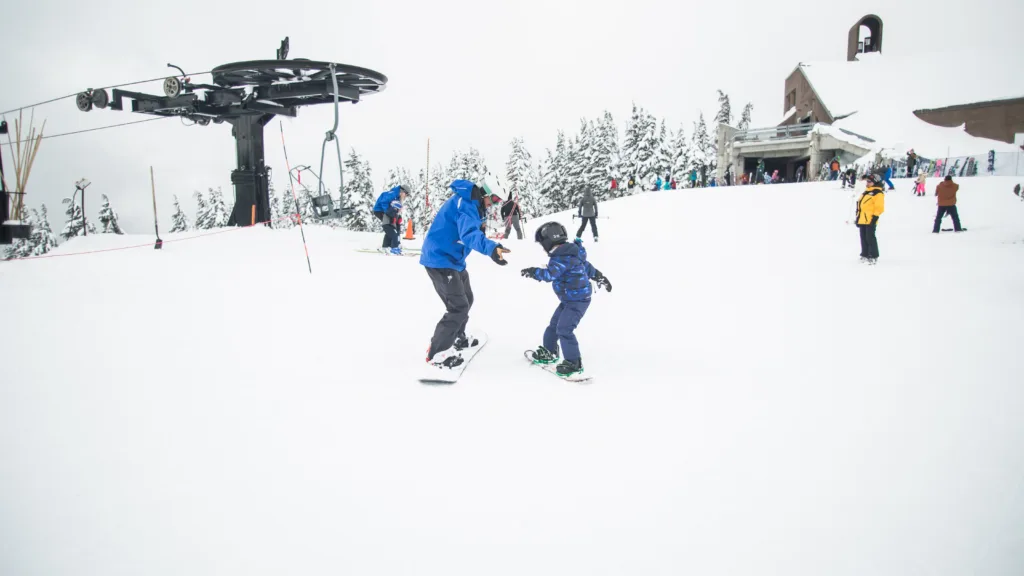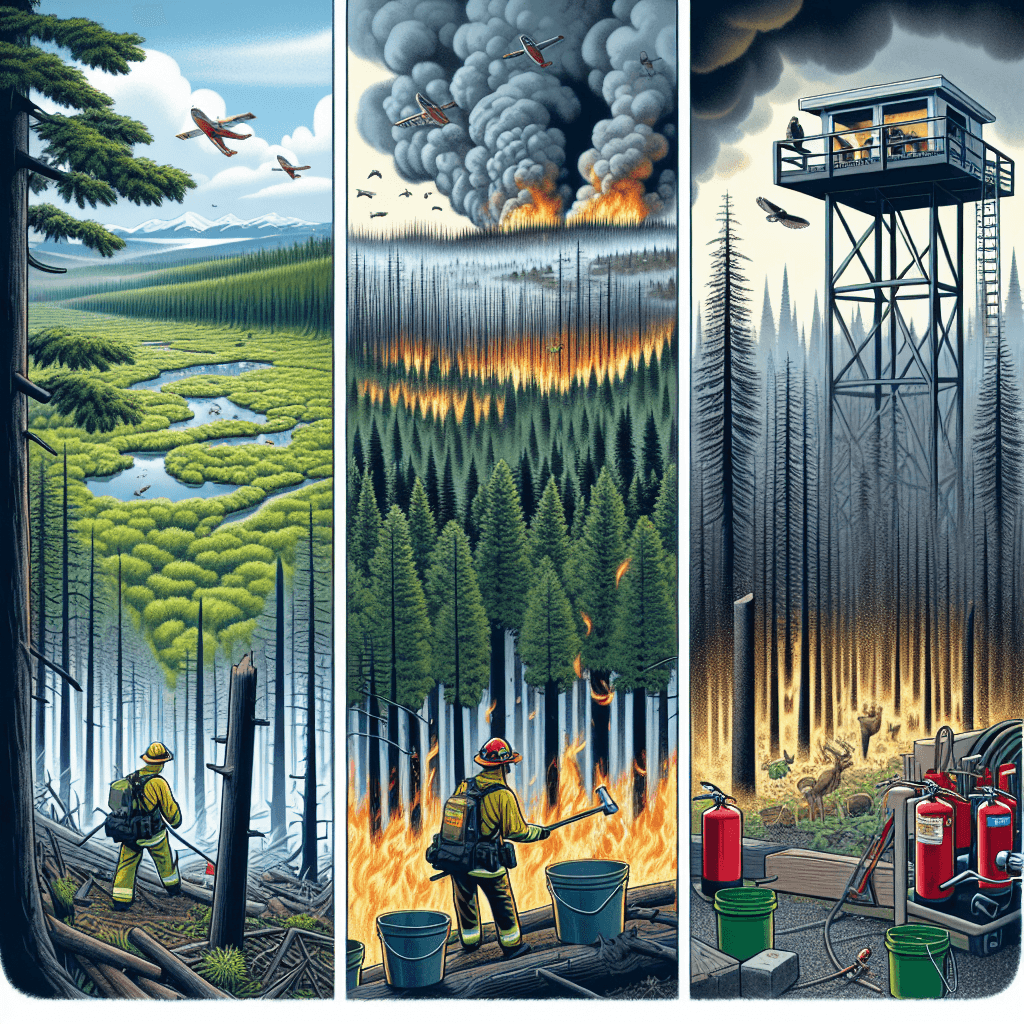In the wake of recent wildfires, it has become imperative to examine the valuable lessons that have emerged, thereby enabling us to improve our preparedness for future incidents. By analyzing the causes, impacts, and responses to these devastating events, we can identify key strategies and preventative measures to minimize the destructive effects of wildfires. This article aims to explore the lessons learned from these recent incidents, providing valuable insights and recommendations for enhancing our readiness and resilience in the face of potential wildfires.
Table of Contents
Emergency planning
In order to effectively respond to wildfires, it is crucial to have a comprehensive emergency plan in place. This plan should outline the necessary actions and protocols to be followed in the event of a wildfire. It should include a clear chain of command, communication protocols, evacuation procedures, and resource allocation strategies. By creating a well-developed emergency plan, communities can ensure that they are prepared to respond to wildfires in a coordinated and efficient manner.
Establishing communication protocols
One of the key components of emergency planning is establishing effective communication protocols. This includes establishing clear channels of communication between emergency responders, community members, and relevant agencies. It is important to ensure that there are redundant communication systems in place, including both traditional methods such as radio and phone lines, as well as technological solutions such as emergency alert systems and social media platforms. By having reliable communication protocols, timely and accurate information can be shared during a wildfire event, leading to more effective response efforts.
Training personnel for wildfire response
Properly trained personnel are vital for effective wildfire response. Training programs should be established to equip emergency responders with the necessary skills and knowledge to respond to wildfires. This includes training in fire behavior and suppression techniques, as well as incident management and coordination. Additionally, community members can also benefit from training programs that educate them on how to prevent wildfires and what actions to take in the event of an evacuation. By investing in training programs, communities can ensure that their personnel are well-prepared to respond to wildfires and minimize their impact.

Promoting fire safety awareness
Community outreach and education play a crucial role in preventing wildfires and ensuring the safety of residents. By promoting fire safety awareness, communities can educate individuals on best practices for fire prevention, such as proper disposal of flammable materials and the importance of maintaining defensible spaces around their properties. This can be done through educational campaigns, workshops, and public awareness events. Additionally, residents should be encouraged to report any suspicious activities that may lead to wildfires. By raising awareness and promoting fire safety, communities can take proactive measures to prevent wildfires before they even start.
Providing resources and information to residents
In addition to promoting fire safety, it is important for communities to provide resources and information to residents to help them prepare for wildfires. This includes providing guidelines for creating defensible spaces around their properties, as well as information on evacuation routes and shelter locations. Communities should also develop and distribute wildfire preparedness kits that contain essential items such as emergency contact numbers, first aid supplies, and maps of the area. By providing residents with the necessary resources and information, communities can empower individuals to take action and be prepared in the event of a wildfire.
Encouraging community participation in prevention measures
An engaged and proactive community is essential in preventing wildfires. Communities should encourage residents to actively participate in prevention measures, such as participating in controlled burns and ensuring their properties are fire-resistant. This can be done through community initiatives and programs that educate residents on the importance of their role in preventing wildfires. By fostering a sense of community ownership and responsibility, communities can work together to mitigate the risk of wildfires and create a safer environment for everyone.

Enhancing early warning systems
Early warning systems are crucial in providing timely information to residents and emergency responders. By enhancing early warning systems, communities can ensure that they have a sufficient amount of time to react and implement their emergency plans. This can be done through the installation of real-time monitoring systems that detect the presence of smoke and fire, as well as the utilization of weather monitoring and prediction tools. By investing in advanced early warning systems, communities can improve their ability to detect wildfires early on and initiate a prompt response.
Utilizing technology for real-time alerts
Technology has the potential to greatly enhance the effectiveness and timeliness of alerts during a wildfire event. Communities should utilize technological solutions such as mobile applications and text message alerts to provide real-time updates and evacuation notices to residents. These systems can be integrated with early warning systems and weather monitoring tools to ensure that residents receive timely and accurate information. By harnessing the power of technology, communities can improve their communication efforts during a wildfire event and increase the likelihood of a successful evacuation.
Developing multiple communication channels
In order to ensure that information reaches the largest number of people possible, communities should develop multiple communication channels. This includes utilizing traditional methods such as radio and television broadcasts, as well as newer methods such as social media platforms and community notification systems. By having multiple communication channels in place, communities can reach residents through their preferred method of communication, increasing the chances that important information is received and acted upon. Additionally, communities should also consider implementing multilingual communication strategies to ensure that all residents can understand and respond to wildfire alerts.

Establishing designated evacuation routes
During a wildfire, the safety of residents is of utmost importance. To ensure a smooth and efficient evacuation process, communities should establish designated evacuation routes. These routes should be clearly marked and regularly maintained to ensure that they are accessible and safe for use during an emergency. In addition to designated routes, alternative routes should also be identified in case primary routes become impassable. By establishing and communicating designated evacuation routes, communities can help residents evacuate safely and reduce the risk of accidents and congestion.
Implementing efficient transportation plans
Efficient transportation plans are essential to facilitate the timely and orderly evacuation of residents during a wildfire event. Communities should work with local transportation authorities to develop plans that address the unique challenges and needs of their area. This may involve coordinating with public transportation agencies to provide additional services during an evacuation, establishing temporary bus or shuttle routes, or implementing traffic management strategies. By implementing efficient transportation plans, communities can ensure that residents have access to reliable transportation options during a wildfire and can evacuate quickly and safely.
Providing accessible evacuation centers
During a wildfire event, evacuation centers play a crucial role in providing temporary shelter and assistance to displaced residents. It is important for communities to ensure that evacuation centers are accessible and well-equipped to meet the needs of all residents, including those with disabilities and special medical needs. This includes providing resources such as medical supplies, food, water, and bedding. Additionally, communities should also establish communication channels between evacuation centers and emergency responders to ensure a coordinated response and efficient distribution of resources. By providing accessible evacuation centers, communities can ensure the safety and well-being of all residents during a wildfire event.

Implementing controlled burns
Managing fuel load is a critical component of wildfire prevention. Controlled burns, also known as prescribed fire, can help reduce fuel levels and decrease the likelihood of large, uncontrolled wildfires. Communities should work with trained professionals to implement controlled burns in strategic areas to remove excess vegetation and reduce the risk of wildfire spread. This should be done in accordance with established guidelines and regulations to ensure the safety and effectiveness of the burns. By implementing controlled burns, communities can proactively manage fuel load and mitigate the risk of destructive wildfires.
Clearing and maintaining defensible spaces
In addition to controlled burns, communities should prioritize clearing and maintaining defensible spaces around structures. Defensible spaces are areas free of flammable vegetation that act as a buffer between structures and potential wildfire threats. Communities should educate residents on the importance of creating and maintaining these spaces, as well as provide guidance on best practices for clearing vegetation and maintaining fire-resistant landscaping. By clearing and maintaining defensible spaces, communities can reduce the risk of wildfires spreading to structures and increase the chances of effective firefighting efforts.
Properly disposing of debris and flammable materials
Properly disposing of debris and flammable materials is essential in preventing wildfires. Communities should establish guidelines and regulations for the disposal of waste that may pose a fire risk, such as yard trimmings and construction materials. This may include implementing recycling programs, providing designated drop-off locations for hazardous waste, and enforcing penalties for illegal dumping. By promoting proper disposal practices, communities can reduce the risk of accidental fires caused by abandoned or improperly discarded materials.

Coordinating efforts between fire departments, law enforcement, and other emergency services
Collaboration between different agencies is crucial for effective wildfire response. Fire departments, law enforcement agencies, and other emergency services should establish clear communication and coordination protocols to ensure a seamless and coordinated response to wildfires. This includes sharing resources and expertise, as well as establishing joint training exercises to improve interagency cooperation. By coordinating efforts, agencies can maximize their effectiveness and enhance the overall response to wildfires, resulting in better outcomes for the community.
Sharing resources and expertise
In addition to coordination between agencies, it is important to share resources and expertise in the event of a wildfire. This can involve mutual aid agreements between neighboring communities, where resources such as personnel, equipment, and supplies are shared during emergencies. Communities should also establish partnerships with local businesses and organizations that can provide additional resources and support in times of need. By sharing resources and expertise, communities can enhance their capabilities and ensure a more robust response to wildfires.
Establishing joint training exercises
To ensure effective collaboration and coordination during a wildfire event, joint training exercises should be established. These exercises should involve personnel from various agencies and departments, including fire departments, law enforcement, and emergency management. By simulating real-life scenarios and practicing response procedures, personnel can gain valuable experience and improve their ability to work together in a coordinated manner. Regular joint training exercises should be conducted to reinforce skills and identify areas for improvement. By investing in joint training exercises, communities can enhance their preparedness and response capabilities.
Ensuring adequate water supply for firefighting
Adequate water supply is crucial for effective firefighting efforts. Communities should assess their water infrastructure to ensure that it can meet the demands of a wildfire event. This may involve upgrading or expanding water storage facilities, installing additional fire hydrants, or implementing water conservation measures to optimize water usage. By ensuring an adequate water supply, communities can provide emergency responders with the resources they need to effectively fight wildfires and protect lives and property.
Updating and maintaining fire hydrants and sprinkler systems
Fire hydrants and sprinkler systems play a critical role in firefighting. Communities should regularly inspect, maintain, and update these systems to ensure their proper functioning. This may include conducting periodic inspections of fire hydrants and ensuring they are in good working condition, as well as testing and servicing sprinkler systems to ensure they are operational. Regular maintenance and updates to these systems can significantly enhance firefighting capabilities and increase the chances of successful fire suppression.
Controlling power lines to prevent sparking
Power lines have the potential to cause wildfires if not properly controlled and maintained. Communities should work with utility companies to implement measures to prevent power lines from sparking and igniting fires. This may include regular inspections of power lines to identify potential hazards, implementing vegetation management programs to ensure clearance around power lines, and installing protective devices to minimize the risk of power line-related wildfires. By controlling power lines, communities can reduce the risk of ignition sources and decrease the likelihood of devastating wildfires.
Promoting the use of fire-resistant materials
Building structures with fire-resistant materials is an important step towards mitigating the risk of wildfires. Communities should promote the use of fire-resistant materials such as metal, concrete, and non-combustible siding. This can be done through building codes and regulations that incentivize the use of these materials, as well as educational campaigns that raise awareness about their benefits. By promoting the use of fire-resistant materials, communities can reduce the vulnerability of structures to wildfires and increase their chances of survival.
Implementing construction guidelines for at-risk areas
Communities should establish construction guidelines for areas that are at a higher risk of wildfires. These guidelines should outline specific requirements for building and landscaping practices to minimize the risk of fire spread. For example, guidelines may include the use of fire-resistant roofing materials, the installation of ember-resistant vents, and the creation of defensible spaces around structures. By implementing construction guidelines, communities can ensure that new developments in at-risk areas are designed and built with fire safety in mind.
Encouraging retrofitting of existing structures
In addition to implementing construction guidelines for new developments, communities should also encourage the retrofitting of existing structures in at-risk areas. This can involve providing incentives for property owners to make fire-resistant upgrades, such as installing fire-resistant roofing or retrofitting windows and doors to be more resistant to embers. By retrofitting existing structures, communities can improve the overall fire resilience of their built environment and reduce the potential for widespread fire damage.
Investing in additional firefighting aircraft
Aerial firefighting capabilities are essential for combating large wildfires. Communities should invest in additional firefighting aircraft to enhance their ability to respond to wildfires quickly and effectively. This may include acquiring helicopters, fixed-wing aircraft, or unmanned aerial systems that can be used for fire detection, aerial reconnaissance, and fire suppression operations. By expanding their aerial firefighting capabilities, communities can improve their ability to contain and extinguish wildfires, minimizing their impact on the environment and property.
Improving technology and equipment for aerial operations
In addition to increasing the number of firefighting aircraft, communities should also invest in improving the technology and equipment used for aerial operations. This includes advancements in fire detection systems, aerial firefighting tools, and communication equipment. By embracing innovative technologies and equipment, communities can enhance the effectiveness and efficiency of aerial firefighting efforts, ultimately reducing the duration and impact of wildfires.
Training pilots and crew for effective deployment
Having well-trained pilots and crew members is essential for the successful deployment of firefighting aircraft. Communities should invest in training programs that provide pilots and crew members with the necessary skills and knowledge to safely and effectively operate aerial firefighting equipment. This includes training in aerial firefighting techniques, navigation, and communication protocols. By ensuring that pilots and crew members are properly trained, communities can optimize the use of their firefighting aircraft and maximize their impact on wildfire suppression.
Rehabilitating affected ecosystems
After a wildfire, communities should prioritize the rehabilitation of affected ecosystems. This may involve conducting ecological assessments to understand the extent of damage and developing restoration plans that focus on promoting the recovery of native vegetation and wildlife habitats. Additionally, communities should also implement measures to prevent erosion and manage invasive species that may negatively impact post-fire recovery. By actively engaging in long-term ecological restoration, communities can ensure the resilience and sustainability of their ecosystems in the face of future wildfires.
Implementing post-fire recovery plans
In addition to ecosystem rehabilitation, communities should also develop and implement post-fire recovery plans to support residents and affected communities. These plans should address immediate needs such as temporary housing and basic services, as well as long-term recovery efforts including rebuilding damaged infrastructure and supporting economic revitalization. By providing comprehensive and timely support to affected communities, communities can help individuals and businesses recover from the impact of wildfires and promote long-term resilience.
Promoting sustainable land management practices
In order to prevent future wildfires, communities should promote sustainable land management practices. This includes using prescribed burns and other controlled fire practices to reduce fuel load, as well as implementing land-use planning strategies that take into account the potential fire risk. Communities should also work with landowners and property managers to encourage sustainable land management practices that promote the health and resilience of ecosystems. By promoting sustainable land management practices, communities can reduce the risk of wildfires and maintain the long-term health and sustainability of their natural resources.

